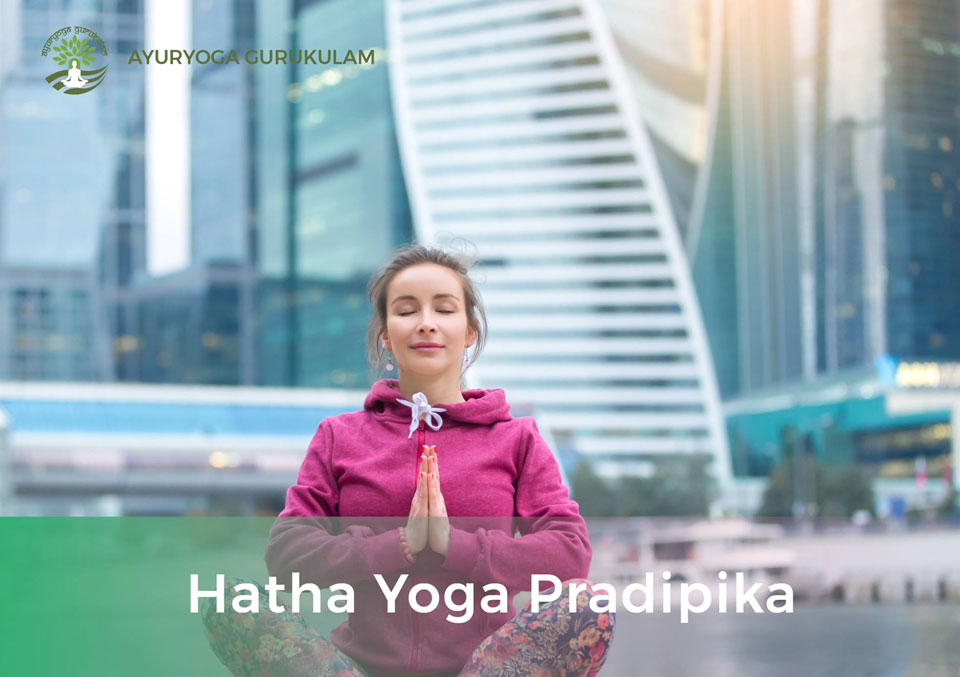
The Hatha Yoga Pradīpikā (Sanskrit: haṭhayōgapradīpikā, हठयोगप्रदीपिका or Light on Hatha Yoga) Sanskrit manual on hatha yoga. Possibly the oldest extant text about Hatha Yoga, the Hatha Yoga Pradipika was written about the 15th century CE, by Swami Swatmarama, a disciple of Swami Goraknath.
The Hatha Yoga Pradipika is a classical text describing Hatha Yoga. Drawing upon previous texts and his own experiences. While the text describes asanas (postures), purifying practices (shatkarma), mudras (finger and hand positions), bandhas (locks), and pranayama (breath exercises), it also explains that the purpose of Hatha Yoga is the awakening of kundalini (subtle energy), advancement to Raja Yoga, and the experience of deep meditative absorption known as samadhi.
Chapter one: Asana
—————————
Yama and Niyama are described
Asana as described by Vasishtha and Masyendranath
Four major asanas of the eighty – four taught by Siva; the excellence of Siddhasana(adepts pose)
Mitahara – moderate diet and food which is prohibited to the hatha sadhaka
Those who can practice hatha yoga
Perfection results from practice
Asana, pranayama, etc should be practiced until perfection or siddhi is achived
Chapter Two: Shatkarma and Pranayama
——————————————————-
What is life and death; the five functions of vayu
Purifications of the nadis and chakras for retention of prana
Sattiwic state of mine for pranayama
Shatkarma six purificatory techniques
Manaomani (mind devoid of thought)
Signs in perfection in hatha yoga
Chapter Three: Mudra and Banda
———————————————
Kundalini is the support of yoga practice
Eight major siddhis obtained by Mudra
Five nadis connect at meru
Semen and mind must be controlled
Kundalini is the key to liberation
Freedom from diseases through moving the kundalini regularly
The ashta sidhi are attained through mudra
Chapter four: Samadi
—————————–
Salutations to the guru Shiva as nada, bindu and kalaa
The process of Samadhi
Mind and athma unite like salt in the sea
When jivatma unites with paramatma, desires are destroyed
Chitta has two causes; vasana and prana
Prana and mind are mixed like milk and water
Raja yoga is the state Iswara tattwa
The liberated one is neither asleep nor awake, neither conscious nor unconscious
Commentary
——————
1. Hatha Yoga Pradipika (with the ‘Jyotsna’ Sanskrit Commentary and English Translation) … English Translation by: Srinvasa Iyangar. … Current Edition Published by: The Adyar Library and Research Centre,
2. Bihar school yoga 1985
Jason Birch has investigated the evolution of the meaning of the Sanskrit word “haṭha.” He specifically researched the key role of the Hatha Yoga Pradīpikā in popularizing a particular interpretation of this term. When written, the Hatha Yoga Pradīpikā drew from various classic texts on different systems of yoga, and Svātmārāma grouped what he had found under the generic term “haṭha yoga”. Although haṭha yoga has evolved into a generic term that is currently understood as a branch of yoga involving physical poses (including sun salutations, vinyāsas, aṣṭāṅga, etc.), it originally had a more specific meaning. After examining Buddhist tantric commentaries and medieval yoga texts that came before the Hatha Yoga Pradīpikā, Birch found that the adverbial uses of the word suggests that it meant “force”. Birch found that, “Rather than the metaphysical explanation of uniting the sun (ha) and moon (ṭha), it is more likely that the name haṭha yoga was inspired by the meaning ‘force’.”